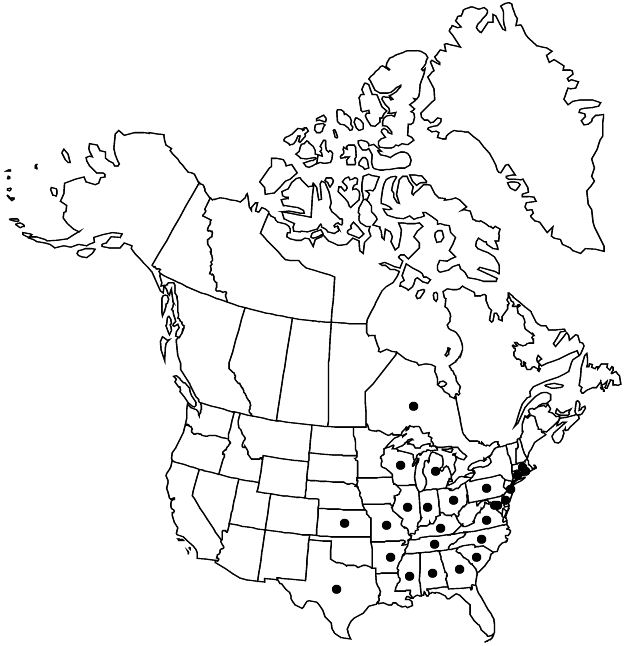Difference between revisions of "Euonymus fortunei"
Symb. Sin. 7: 660. 1933. (as Evonymus)
FNA>Volume Importer |
imported>Volume Importer |
||
| (5 intermediate revisions by 2 users not shown) | |||
| Line 6: | Line 6: | ||
|place=7: 660. 1933 | |place=7: 660. 1933 | ||
|year=1933 | |year=1933 | ||
| + | |other_info_on_pub=(as Evonymus) | ||
}} | }} | ||
|common_names=Wintercreeper;climbing euonymus | |common_names=Wintercreeper;climbing euonymus | ||
| Line 12: | Line 13: | ||
|label=Introduced | |label=Introduced | ||
}} | }} | ||
| − | |basionyms={{Treatment/ID/ | + | |basionyms={{Treatment/ID/Basionym |
|name=Elaeodendron fortunei | |name=Elaeodendron fortunei | ||
|authority=Turczaninow | |authority=Turczaninow | ||
| + | |rank=species | ||
| + | |publication_title=Bull. Soc. Imp. Naturistes Moscou | ||
| + | |publication_place=36: 603. 1863 | ||
}} | }} | ||
|synonyms={{Treatment/ID/Synonym | |synonyms={{Treatment/ID/Synonym | ||
|name=Euonymus hederaceus | |name=Euonymus hederaceus | ||
|authority=Champion ex Bentham | |authority=Champion ex Bentham | ||
| + | |rank=species | ||
}} {{Treatment/ID/Synonym | }} {{Treatment/ID/Synonym | ||
|name=E. kiautschovicus | |name=E. kiautschovicus | ||
|authority=Loesener | |authority=Loesener | ||
| + | |rank=species | ||
}} | }} | ||
|hierarchy=Celastraceae;Euonymus;Euonymus fortunei | |hierarchy=Celastraceae;Euonymus;Euonymus fortunei | ||
| Line 37: | Line 43: | ||
|elevation=0–300 m. | |elevation=0–300 m. | ||
|distribution=Ont.;Ala.;Ark.;Conn.;Del.;D.C.;Ga.;Ill.;Ind.;Kans.;Ky.;Md.;Mass.;Mich.;Miss.;Mo.;N.J.;N.C.;Ohio;Pa.;R.I.;S.C.;Tenn.;Tex.;Va.;Wis.;e Asia. | |distribution=Ont.;Ala.;Ark.;Conn.;Del.;D.C.;Ga.;Ill.;Ind.;Kans.;Ky.;Md.;Mass.;Mich.;Miss.;Mo.;N.J.;N.C.;Ohio;Pa.;R.I.;S.C.;Tenn.;Tex.;Va.;Wis.;e Asia. | ||
| + | |introduced=true | ||
|discussion=<p><i>Euonymus fortunei</i> is widely planted as an ornamental and has escaped widely. Plants grow horizontally until they encounter a vertical surface like a rock, wall, or tree, which they then climb using adventitious roots. They sometimes form dense mats over other vegetation, excluding other plants.</p> | |discussion=<p><i>Euonymus fortunei</i> is widely planted as an ornamental and has escaped widely. Plants grow horizontally until they encounter a vertical surface like a rock, wall, or tree, which they then climb using adventitious roots. They sometimes form dense mats over other vegetation, excluding other plants.</p> | ||
|tables= | |tables= | ||
| Line 46: | Line 53: | ||
-->{{#Taxon: | -->{{#Taxon: | ||
name=Euonymus fortunei | name=Euonymus fortunei | ||
| − | |||
|authority=(Turczaninow) Handel-Mazzetti | |authority=(Turczaninow) Handel-Mazzetti | ||
|rank=species | |rank=species | ||
| Line 62: | Line 68: | ||
|publication year=1933 | |publication year=1933 | ||
|special status=Introduced | |special status=Introduced | ||
| − | |source xml=https:// | + | |source xml=https://bitbucket.org/aafc-mbb/fna-data-curation/src/2e0870ddd59836b60bcf96646a41e87ea5a5943a/coarse_grained_fna_xml/V12/V12_440.xml |
|genus=Euonymus | |genus=Euonymus | ||
|species=Euonymus fortunei | |species=Euonymus fortunei | ||
Latest revision as of 19:15, 5 November 2020
Vines to 20 m. Stems prostrate to erect, climbing by adventitious roots; young branches terete, not corky winged. Leaves persistent; petiole 5–10 mm; blade lanceolate, ovate, elliptic, to broadly obovate-elliptic, 1–9 × 0.5–5 cm, base cuneate, acute, obtuse, to rounded, margins crenate-serrate, apex obtuse, acute, or acuminate. Inflorescences axillary, 5–15-flowered. Flowers: sepals 4; petals 4, white to pale green, oblong, 3–4 × 2–3 mm; stamens 4; ovary smooth. Capsules straw colored to orange, globose, 6–8 mm diam., unlobed or very shallowly 4-lobed, lobes clearly connate, surface smooth. Seeds ellipsoid, 4–6 mm; aril orange. 2n = 32.
Phenology: Flowering summer; fruiting summer–fall.
Habitat: Moist woods, stream banks, riverbanks, disturbed areas.
Elevation: 0–300 m.
Distribution

Introduced; Ont., Ala., Ark., Conn., Del., D.C., Ga., Ill., Ind., Kans., Ky., Md., Mass., Mich., Miss., Mo., N.J., N.C., Ohio, Pa., R.I., S.C., Tenn., Tex., Va., Wis., e Asia.
Discussion
Euonymus fortunei is widely planted as an ornamental and has escaped widely. Plants grow horizontally until they encounter a vertical surface like a rock, wall, or tree, which they then climb using adventitious roots. They sometimes form dense mats over other vegetation, excluding other plants.
Selected References
None.